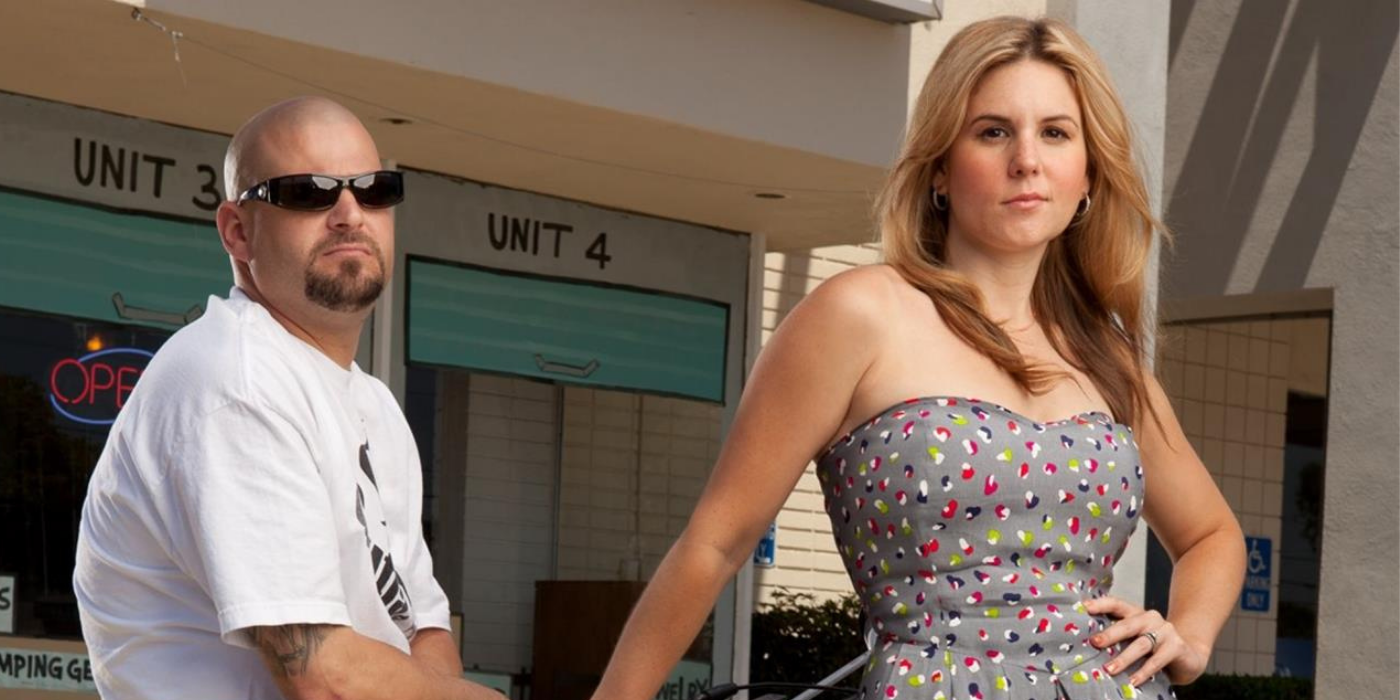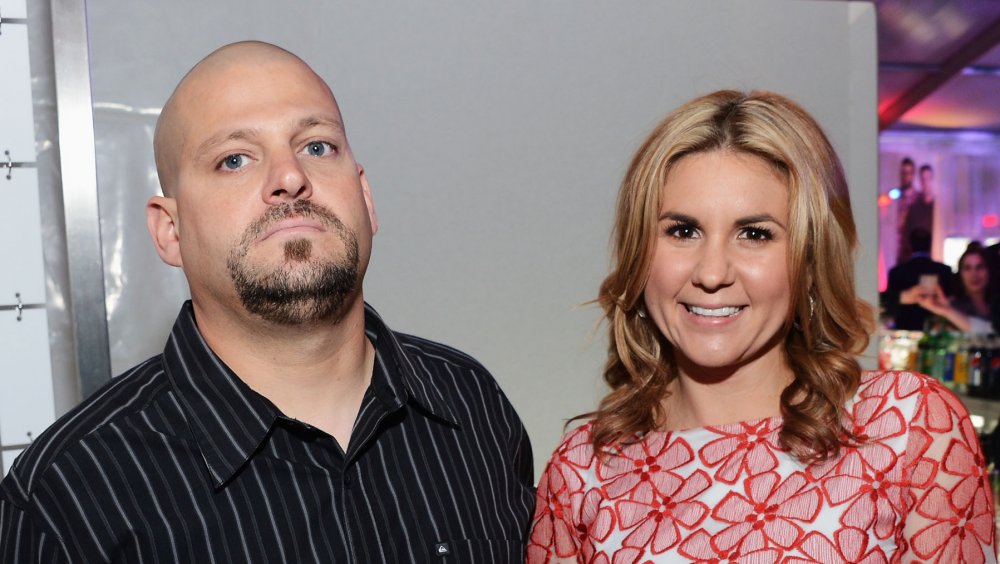Have you ever heard a story that just leaves you wondering, "What on earth happened there?" It's a natural human thing, this curiosity about puzzling situations, and it often sparks conversations, doesn't it? The question, "What did Jarrod do to Brandi?" is one of those intriguing whispers that can make us pause and think, "What really goes on behind the scenes in people's lives?" So, too it's almost, we often find ourselves drawn to figuring out the hidden reasons for actions that seem a bit out of the ordinary.
Sometimes, what seems like a simple question about someone's actions can actually point to something much deeper. We hear about things that appear confusing, or maybe even quite shocking, and our minds naturally try to piece together the puzzle. This happens all the time, for example, when we try to make sense of why people behave in certain ways that don't quite fit our usual expectations.
It's worth considering that human behavior is, in a way, incredibly varied and sometimes influenced by things we can't easily see. What looks like one thing on the surface might have roots in something else entirely, like a person's mental well-being. This brings us to a really important area: understanding mental health conditions that can, in fact, shape how someone acts, sometimes in ways that might lead to questions like, "What did Jarrod do to Brandi?"
Table of Contents
- What Did Jarrod Do to Brandi? Unpacking the Question
- Understanding Dissociative Identity Disorder (DID)
- Living with DID: Daily Life and Mental Well-being
- Support and Moving Forward: Treatment for DID
- People Often Ask About Complex Behaviors and DID
What Did Jarrod Do to Brandi? Unpacking the Question
The question "What did Jarrod do to Brandi?" really sparks a lot of curiosity, doesn't it? It suggests a situation that might be confusing or perhaps even upsetting, prompting people to seek answers. When we hear about someone acting in a way that seems out of character, or perhaps inconsistent, it's natural to wonder about the underlying reasons. This kind of question often pops up when people observe behaviors that don't quite fit their usual understanding of a person, or maybe even a situation that seems to shift unexpectedly.
Sometimes, in life, we come across stories where a person's actions seem to change dramatically, or they might appear to be different people at different times. This can be very disorienting for those around them, and it naturally leads to speculation. So, what looks like a simple question about Jarrod's actions could, in some respects, be a way for us to try and make sense of behavior that feels difficult to explain using common assumptions. It's a call for clarity, really, when things feel murky.
It's important to remember that without specific details about Jarrod and Brandi, we can only talk about the general idea behind such questions. They often highlight how much we crave explanations for human actions, especially when those actions seem puzzling. This desire to understand is a good thing, though, as it can lead us to explore deeper topics, like how mental health can influence what people do, and how they interact with others. Perhaps, in a way, this question helps us open up conversations about things we might not usually discuss.
Understanding Dissociative Identity Disorder (DID)
When people observe behaviors that seem to shift or change in a person, it can sometimes be linked to a mental health condition called Dissociative Identity Disorder, or DID. This condition, which is a bit rare, involves a person having two or more separate personalities. These distinct identities, or personality states, can actually take control of a person's behavior at different times. So, in some respects, it's like different parts of a person's identity are present and can step forward.
This condition, as a matter of fact, is often misunderstood, and it used to be known by other names. You may know this stigmatized condition as multiple personality disorder or split personality. The name has changed over time to better reflect what the condition truly involves, moving away from some of the more sensational ideas people had about it. It's a psychiatric condition where a person has more than one identity, and these are often referred to as alters.
Understanding DID means looking beyond the surface of behavior and recognizing that it's a complex mental health challenge. Individuals with DID will exhibit two or more distinct identities, and this can lead to identity and reality disruption. It’s not just about mood swings; it's about fundamental shifts in who a person feels they are, and how they experience the world. This condition can really impact how a person thinks, feels, and acts, and it's important to approach it with care and an open mind.
What is DID, Really?
Dissociative identity disorder is, in essence, a mental health condition where a person experiences having two or more distinct identities. These identities are not just different moods or phases; they are separate personality states that can take over control of a person's behavior. Imagine, if you will, that different "parts" of a person's self emerge, each with its own way of thinking, feeling, and relating to the world. This can be quite jarring for the person experiencing it, and for those around them, too.
These separate personalities, or "alters," can have their own unique names, ages, genders, and even ways of speaking. They might have different memories, or different ways of reacting to situations. This means that a person with DID might, for example, act very differently from one moment to the next, seemingly without a clear reason to an outside observer. This kind of identity and reality disruption is a core part of what DID is all about, and it's rather a profound experience for the individual.
It's a rare condition, yes, but its impact on an individual's life can be very significant. The presence of these distinct identities means that the person's sense of self is not unified in the way most people experience it. This can lead to a lot of confusion and distress, as they might find themselves doing things or having memories they don't recall. So, when people ask about puzzling behaviors, sometimes, in a way, understanding DID can offer a different perspective.
The History of DID: From "Multiple Personality" to Now
For a long time, this condition was widely known as multiple personality disorder, or MPD. That name, you know, really shaped how people thought about it, often leading to a lot of dramatic and sometimes inaccurate portrayals in movies and stories. The idea of a "split personality" became quite popular, but it also contributed to a lot of misunderstanding and fear surrounding the condition. It was a very stigmatized condition, honestly, and still faces challenges even today.
The shift in name to Dissociative Identity Disorder, or DID, was a really important step. This change happened to better describe the actual experience of the condition, moving away from the idea of completely separate "personalities" living inside one person. Instead, it focuses on the idea of distinct identities or personality states that are present within one individual, but which alternately take control. It's more about a disruption in identity rather than simply having many different people inside, if that makes sense.
This evolution in understanding reflects a growing awareness and a more compassionate approach to mental health. The tide is turning, in fact, as more accurate information becomes available. Learning about the symptoms of DID here helps us to move past old, often harmful, ideas and see the condition for what it truly is: a complex mental health challenge that deserves genuine understanding and support, not judgment. This historical context is pretty important, really, for getting a clearer picture.
Common Signs and How DID Shows Up
Understanding the main DID signs and symptoms is crucial for recognizing this condition. One of the most noticeable signs, for example, is the presence of those two or more distinct identities or personality states. A person might suddenly switch from one identity to another, and this can be quite evident to others. One moment they might be acting like one person, and then, seemingly without warning, they might behave in a completely different way, with different mannerisms or even different voices.
Another common sign is memory gaps, or what's called dissociative amnesia. Individuals with DID might find they can't remember everyday events, important personal information, or even traumatic past events. They might "lose time," meaning they can't recall periods when another identity was in control. This can be incredibly confusing and distressing for the person, and it can really disrupt their daily life. It's a very challenging aspect of the condition, naturally.
Beyond the identity shifts and memory issues, people with DID might also experience other dissociative symptoms. These can include depersonalization, which is feeling detached from one's own body or thoughts, or derealization, which is feeling that the world around them isn't real. They might also experience a sense of confusion about who they are, or a distorted sense of reality. These signs, you know, really highlight the deep impact DID has on a person's sense of self and their connection to the world around them.
Living with DID: Daily Life and Mental Well-being
Living with Dissociative Identity Disorder is, quite honestly, a significant challenge that affects nearly every part of a person's daily life and mental well-being. The constant shifts in identity and the memory gaps can make everyday tasks incredibly difficult. Imagine trying to keep a job, maintain relationships, or even just manage your home when different parts of you are taking control at different times, and you might not remember what happened. It's a bit like living with constant unpredictability, isn't it?
The condition can also lead to a lot of emotional distress. People with DID often experience high levels of anxiety, depression, and sometimes even suicidal thoughts, as a matter of fact. The internal conflict between identities, the confusion, and the trauma that often underlies the condition can be immensely painful. It's a rare mental health condition that is characterized by identity and reality disruption, and this disruption really takes a toll on a person's inner world and their ability to feel stable.
Despite these difficulties, it's important to remember that people living with DID are not defined by their condition. They are individuals who are navigating a very complex internal landscape, and they deserve compassion and understanding. The daily struggle is real, but with the right support and treatment, many people with DID learn to manage their symptoms and live more stable and fulfilling lives. It's a testament to human resilience, really, how people cope with such profound challenges.
The Impact on Everyday Experiences
The presence of two or more distinct identities can significantly affect a person's daily life. For instance, imagine trying to maintain a consistent routine when one identity might prefer certain foods, while another might dislike them completely. Or, one identity might be very organized, and another might be quite messy. These seemingly small differences can, in fact, add up to major disruptions in a person's ability to manage their home, their work, or even just their personal hygiene. It's a very practical challenge, you know.
Social interactions can also become incredibly complicated. A person with DID might behave in ways that seem inconsistent to friends and family, leading to confusion, frustration, or even fear in those around them. They might make plans as one identity, and then another identity might not remember those plans, leading to missed appointments or misunderstandings. This can strain relationships quite a bit, making it hard to form and keep close connections. It's a rather isolating experience for many, honestly.
Furthermore, the memory gaps that come with DID can make learning new things or retaining information a real struggle. A person might learn a skill as one identity, but then another identity might not have access to that memory, requiring them to learn it again. This can affect education, employment, and just general functioning in the world. It's a condition that truly affects mental health and daily life in profound ways, making even simple tasks feel like big hurdles, basically.
Dealing with Misconceptions and Stigma
Dissociative Identity Disorder comes with a lot of stigma and misunderstanding, which makes living with the condition even harder. Many people have inaccurate ideas about DID, often fueled by sensational media portrayals that suggest people with DID are violent, unpredictable, or even faking their condition. This couldn't be further from the truth, actually, and these myths create a lot of pain and discrimination for those who live with DID. It's a truly damaging aspect, this misunderstanding.
One common myth we need to bust is the idea that DID is just about having "good" and "evil" personalities. In reality, the identities are often parts of a whole person who have developed as a way to cope with severe trauma, usually in childhood. They are not separate "people" in the way a movie might show, but rather distinct states of consciousness within one individual. So, in some respects, it's about a fragmented sense of self, not a battle between good and bad. This distinction is pretty important, really.
The good news is that the tide is turning, and there's a growing movement to educate the public and reduce the stigma surrounding DID. Learning about the symptoms of DID here, and understanding its true nature, helps to foster compassion and support. When we challenge these misconceptions, we create a more accepting environment where people with DID feel safer to seek help and live openly. It's a journey, for sure, but one that's making progress, you know.
Support and Moving Forward: Treatment for DID
For individuals living with Dissociative Identity Disorder, getting the right support and treatment is absolutely vital for managing the condition and moving towards a more stable life. While DID is a complex condition, there are effective treatment options available that can make a real difference. The main goal of treatment is often to help the different identities integrate, or at least to learn to cooperate and communicate with each other, so the person can function more smoothly. It's a very personal journey, for sure.
Psychotherapy, especially a type called trauma-informed therapy, is typically the core of DID treatment. This kind of therapy helps the individual process the underlying trauma that often led to the development of the condition. A skilled therapist can help the person understand their different identities, develop coping strategies, and work towards a more cohesive sense of self. It's a long-term process, yes, but one that offers real hope for healing and recovery. This kind of support is incredibly important, naturally.
Beyond individual therapy, other forms of support can also be very helpful. Group therapy, where people with DID can connect with others who share similar experiences, can reduce feelings of isolation and provide a sense of community. Family therapy can also help loved ones understand the condition and learn how to best support the individual. Medications might be used to treat co-occurring conditions like depression or anxiety, though they don't treat DID directly. It's a comprehensive approach, really, that focuses on the whole person. To learn more about mental health support, you can visit NAMI.org, which offers a lot of helpful resources and information.
Remember, if you or someone you know might be struggling with symptoms related to dissociative identity disorder, reaching out for professional help is the most important step. Mental health professionals who specialize in trauma and dissociation can provide accurate diagnosis and tailored treatment plans. You can learn more about mental health conditions on our site, and we also have information on finding support services. Taking that first step towards understanding and support can truly change lives, and it's a brave thing to do, basically.
People Often Ask About Complex Behaviors and DID
When questions like "What did Jarrod do to Brandi?" come up, people often have deeper questions about human behavior and mental health. Here are some common things people wonder about, especially when trying to understand conditions like Dissociative Identity Disorder.
Is DID the same as having multiple personalities?
While Dissociative Identity Disorder was formerly known as multiple personality disorder, the current understanding is a bit different. It's not about having completely separate "people" living inside one body. Instead, it involves two or more distinct identities or personality states that are present within one individual and can take control of their behavior. It's more about a fragmentation of identity rather than separate entities, if that makes sense. The shift in terminology really helps to bust some common myths and offers a more accurate picture of the condition.
Can someone with DID be dangerous?
It's a very common misconception, actually, that people with DID are inherently dangerous or violent. This idea is largely fueled by sensationalized portrayals in media, and it's simply not true. Individuals with DID are, in fact, more likely to be victims of violence and abuse than perpetrators. The condition itself doesn't make someone dangerous; rather, it's a coping mechanism for severe trauma. So, it's important to challenge this harmful stereotype and approach people with DID with compassion, not fear.
How does DID affect relationships?
Living with DID can present significant challenges for relationships, both with family and friends. The shifts between identities, memory gaps, and inconsistent behaviors can be very confusing and distressing for loved ones. It can be hard for others to understand why a person acts differently at different times, or why they might not remember shared experiences. However, with open communication, education, and professional support, relationships can be maintained and even strengthened. Understanding the condition is a really important first step for everyone involved, you know.



